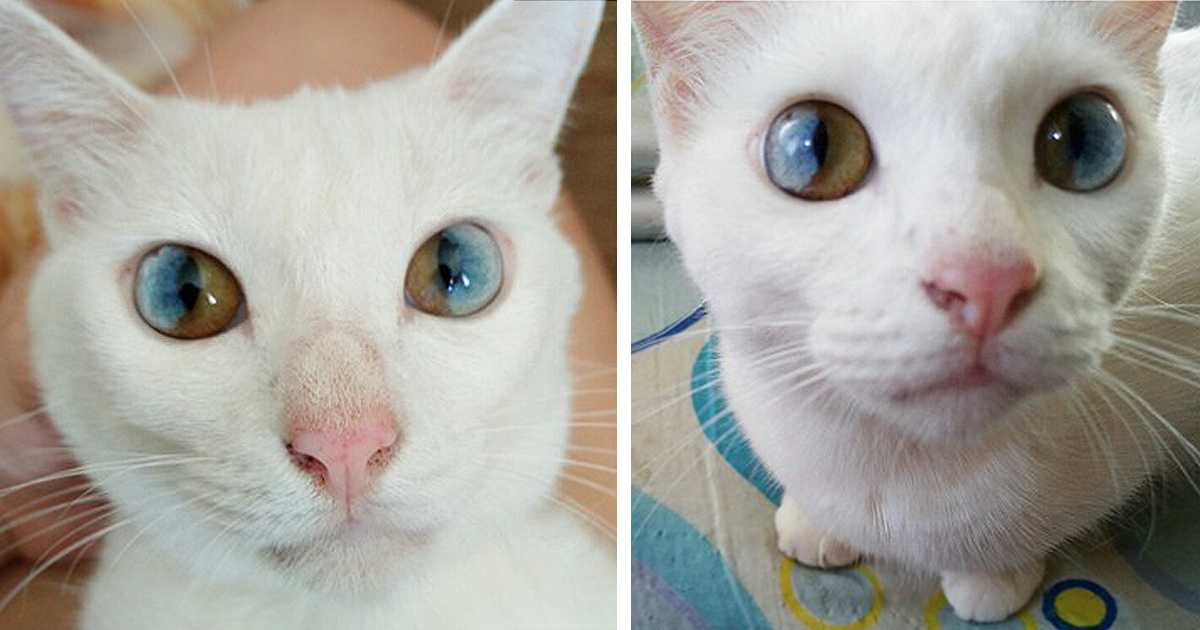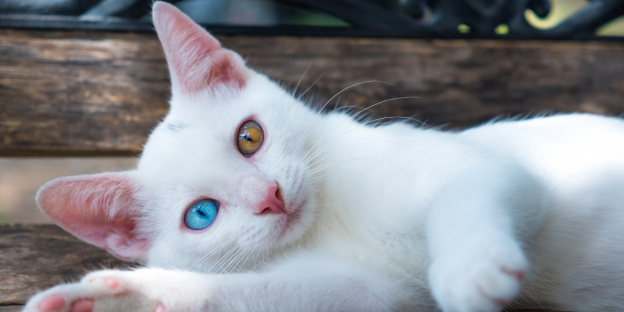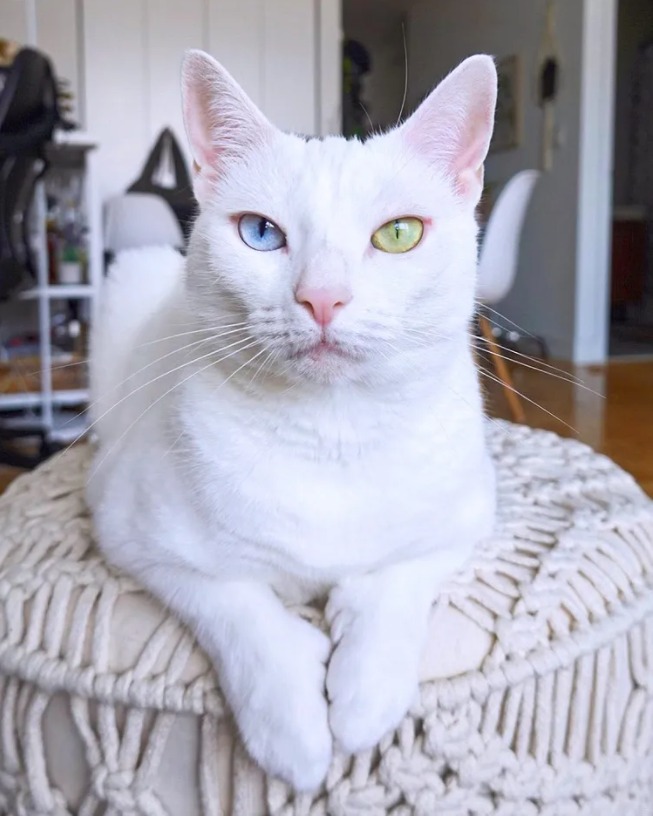It’s hard not to be captivated by a cat that has eyes of two different colors. It’s even more extraordinary to see a cat with a mix of different shades in one eye, but these cats do exist! If you happen to encounter a cat with this rare trait, it is called heterochromia and it’s not a cause for concern. Heterochromia is not a medical condition, and it doesn’t affect a cat’s vision or have any negative consequences.

Fun fact: Heterochromia, the condition where eyes have different colors, is not just limited to cats. Humans can also have it! Some notable individuals with this condition include Dan Aykroyd and Kate Bosworth. Interestingly, singer David Bowie was often thought to have heterochromia, but it turns out that an injury caused one pupil to dilate, making one eye appear darker. There are two types of heterochromia: complete heterochromia where both eyes have different colors, and sectoral heterochromia where only one eye has two different colored sections in the iris.

The terms “complete heterochromia” and “sectoral heterochromia” may seem complicated, but they actually just describe the condition of heterochromia iridis, which means “different colored irises” in Greek. This unique trait in cats is determined by genetics and pigmentation. Initially, all kittens are born with blue eyes, but their true eye color becomes apparent around 7-12 weeks as melanin, a pigment, moves into the iris. The amount of melanin that enters the iris determines the eye color, with no melanin resulting in blue eyes.

Heterochromia, a phenomenon where cats have eyes of different colors, is frequently linked to genes that lead to the formation of either all-white or two-toned felines. Certain breeds, such as the Japanese Bobtail, Turkish Angora, and Turkish Van, are more prone to developing heterochromia because of their genetic makeup. Nevertheless, any cat can conceivably exhibit this trait provided they possess the appropriate genetic characteristics.

As a kitten ages, it might end up with one blue eye due to genetics that prevent melanin from reaching it. The term for this is complete heterochromia. Alternatively, if one iris has varying concentrations of melanin, sectoral heterochromia can occur. This results in one eye having multiple colors, which is pretty amazing, right?

While it may seem cool to witness your feline’s eyes showcasing different hues, it’s important to bring them for a medical check-up if you observe such changes post their growth phase. Typically, a kitty’s eye color matures in the initial 12 weeks of their existence. Any modifications in pigmentation beyond that duration may imply concerns like inflammation, iron buildup, or bleeding in your furry buddy’s visual organs.
